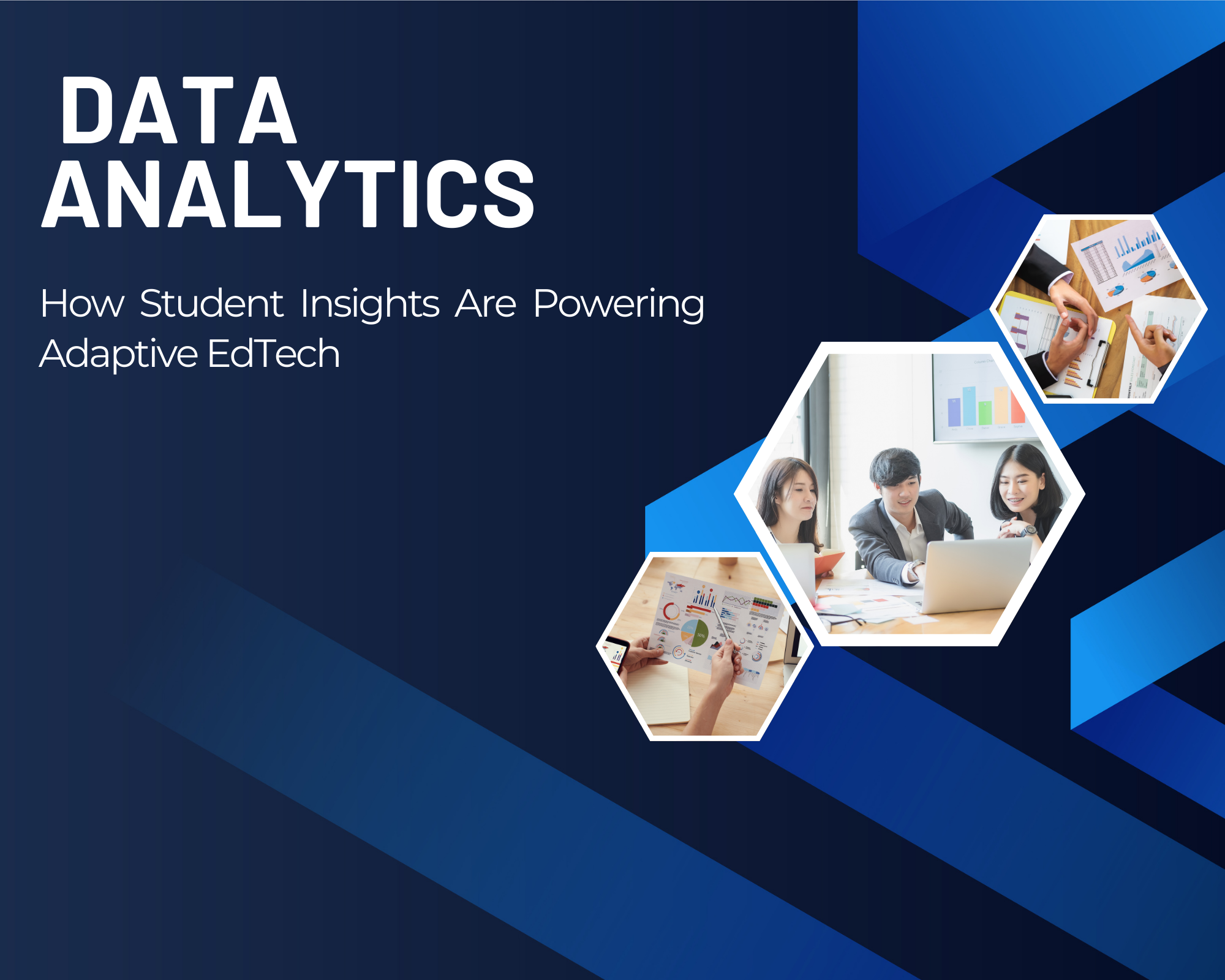You might know that data analytics is changing many fields, and education is one of them.
Schools use data to make better choices, help students succeed, and improve learning.

Data analytics is changing education by giving teachers insights. These insights help them adjust their teaching to fit what students need.
Key Takeaways
- Data analytics improves student outcomes by identifying areas of struggle.
- Educators can make informed decisions using data-driven insights.
- The use of data analytics enhances the overall learning experience.
- Schools can identify trends and patterns in student behavior.
- Data analytics helps educators tailor their teaching methods.
The Data Revolution in Modern Education
Modern education is changing fast thanks to data analytics. Schools are now using educational data to improve how they teach and manage resources.
How Data is Transforming the Educational Landscape
Data in education is more than just tracking grades. It helps schools see the whole picture of learning. By looking at different data points, schools can find ways to get better and use resources wisely.

Key Data Points Schools Should Be Tracking
To use data analytics well, schools need to track the right things. Here are some important ones:
Academic Performance Metrics
It’s key to watch academic performance. Schools should look at grades and test scores. This helps find students who need extra help.
Behavioral and Engagement Indicators
Behavioral data and engagement indicators show how students interact with learning. This info helps make school a better place for everyone.
By using these data points, schools can make choices that help students succeed. This improves education for everyone.
Understanding Data Analytics in the Educational Context
As schools use more data to help students, knowing data analytics is key. It uses adaptive technology to look at lots of data. This helps teachers improve how they teach and helps students learn better.
Defining Educational Data Analytics
Educational data analytics is about using data to make schools better. It looks at things like how well students do, if they show up, and how interested they are. This helps teachers know who needs extra help and how to help them.
Types of Analytics: Descriptive, Predictive, and Prescriptive
There are three main types of analytics in schools:
- Descriptive analytics: Shows how students are doing now.
- Predictive analytics: Looks at past data to guess how students will do in the future.
- Prescriptive analytics: Tells teachers what actions they can take to help students more.
By using all these types, schools can really understand their students. They can then make plans to help them succeed.

The Data Analytics Lifecycle in Schools
The data analytics process in schools has a few main steps. It starts with collecting data, then analyzing it, and finally making sense of it. This way, teachers can use data analytics to help students do their best. It helps schools keep getting better at teaching and helping students.
Benefits of Implementing Data Analytics in Your School
Using data analytics, schools can gain valuable insights to better student results. This approach helps teachers make smart choices, boosting both learning and school operations.
Improving Student Performance Through Data-Driven Insights
Data analytics helps schools spot trends in student success. By looking at test scores, attendance, and student backgrounds, teachers can tailor help for each student.
Enhancing Administrative Efficiency
Data analytics makes school tasks easier, freeing up staff for important work. It helps with spending, planning, and staff use.
Optimizing Resource Allocation
Good resource use is key for a school’s success. Data analytics finds where resources are wasted and shows better uses.
Budget Optimization
With data analytics, schools can wisely spend their budget. By studying spending, student numbers, and program success, they can get more from their money.
Staff Deployment Strategies
Data guides how staff is used, making sure everyone is working well. For example, looking at teacher-to-student ratios, staff workloads, and department needs helps place staff right.
| Area | Without Data Analytics | With Data Analytics |
|---|---|---|
| Student Performance | Generalized teaching approaches | Targeted interventions based on data insights |
| Administrative Efficiency | Manual, time-consuming processes | Streamlined processes through data-driven insights |
| Resource Allocation | Inefficient allocation based on guesswork | Optimized allocation based on data analysis |
By using data analytics, schools can improve learning and run more smoothly. This approach helps schools create better learning spaces and reach their goals more effectively.
Essential Data Sources for Comprehensive School Analytics
To create a full analytics system, schools need to find and use different data sources. Good data analytics in schools comes from looking at many data points. This gives a complete picture of how students do and behave.
Student Information Systems
Student Information Systems (SIS) hold key info about students. This includes who they are, if they’re enrolled, and their grades.
Learning Management Systems
Learning Management Systems (LMS) keep track of how students do in online classes. They show how students learn and where they might need help.
Assessment and Testing Platforms
Platforms for tests and assessments show how well students do. This helps teachers see where students might be struggling. They can then change their teaching to help more.
Attendance and Behavioral Data
Keeping an eye on when students are there and how they act helps spot problems early. This way, schools can help students before things get worse.
By combining these data sources, schools can use data analytics and technology better. This helps students learn more and makes running the school more efficient.
Building Your School’s Data Infrastructure
A strong data infrastructure is key for any school’s data analytics success. Schools must invest in the right technology and infrastructure to use data wisely.
Necessary Technology Components
To start, schools need to identify the right technology pieces. This includes:
- Reliable data collection tools
- Advanced analysis software options
- Secure data storage solutions
Data Collection Tools
Collecting data effectively is vital. Schools should look for tools that work well with systems like SIS and LMS. Some good examples are:
- Google Forms for surveys and feedback
- Specialized educational software for tracking student progress
Analysis Software Options
After collecting data, schools need strong analysis tools. Some top choices are:
- Tableau for data visualization
- Power BI for business intelligence
- R or Python for advanced statistical analysis
Data Storage and Management Solutions
After analyzing data, schools must store it safely. Cloud services like Amazon Web Services (AWS) or Microsoft Azure are great for this.
Security and Privacy Considerations
Keeping data safe and private is crucial. Schools must follow rules like FERPA and use strong security, like encryption and access controls.
By focusing on these areas, schools can create a solid data infrastructure. This supports their analytics efforts and helps make better decisions.
Leveraging Data Analytics for Personalized Learning
Data analytics helps teachers make learning plans that fit each student’s needs. By looking at different data, teachers can see what each student is good at and what they need to work on. This makes learning more personal and effective.
Creating Adaptive Learning Pathways
Adaptive learning paths change to fit how each student learns and moves. Data analytics makes these paths by checking how well students do and changing the lessons as needed. This way, every student gets the right challenge and help when they need it.
Identifying and Supporting Struggling Students
Data analytics in education is great for spotting students who are falling behind. Teachers can look at things like how often students come to class and their grades. This lets them help these students catch up early on.
Challenging High-Performing Students
Data analytics also helps find students who are doing well and gives them special challenges. This includes:
- Customized Acceleration Programs: Special programs for advanced students to learn more quickly in certain subjects.
- Enrichment Opportunity Matching: Finding activities that match what high-achieving students are interested in and good at.
Customized Acceleration Programs
These programs give high-achieving students harder material and projects that fit their skills and interests.
Enrichment Opportunity Matching
Teachers use data to find special projects, competitions, or mentorships that will challenge and engage high-achieving students.
Data-Driven Decision Making in Education
Today, schools use data analytics more than ever. This is because they need to make decisions based on facts. This way, they can improve student results and work more efficiently.
Establishing a Culture of Evidence-Based Practices
To use data well, schools must value evidence-based practices. This means:
- Encouraging staff to use data in their decisions
- Offering training on how to understand and use data
- Helping staff work together to share knowledge and ideas
Training Staff to Interpret and Apply Data
It’s key to train staff to use data wisely. This includes:
- Workshops on how to analyze and understand data
- Coaching on using data in teaching
- Regular talks to discuss using data in decisions
Balancing Data with Professional Judgment
Data is very helpful, but it’s also important to use your own judgment. Teachers should look at data, but also think about each situation’s unique details.
By using data to guide decisions, schools can become better places to learn. This method helps students do better and makes the school run more smoothly.
Implementing Predictive Analytics for Student Success
Education is getting better thanks to predictive analytics. It looks at past data to spot trends. This helps schools prepare for future challenges.
Early Warning Systems for At-Risk Students
Predictive analytics is key for early warning systems. These systems find students at risk of failing or dropping out. Teachers can then help them early on.
Forecasting Resource Needs
Predictive analytics also predicts what resources schools will need. This includes books and staff. It helps schools prepare for their students’ needs.
Predicting Enrollment Trends
It can also forecast how many students will enroll. This is crucial for planning. Schools can plan better for their future.
Demographic Analysis Techniques
Looking at demographics is important in education. It helps schools understand their students better. This leads to better decisions.
Long-term Planning with Predictive Models
Predictive models aid in long-term planning. They help schools get ready for the future. As Dr. Maria Klawe, President of Harvey Mudd College, said,
“The use of data analytics in education is not just about improving efficiency; it’s about creating a more effective and equitable system.”
Powering Education with Adaptive Technology
Adaptive technology is changing education by offering personalized learning. This move towards adaptive learning is more than just new tech. It’s about making learning more effective and fun.
Integrating Adaptive Tech in the Classroom
Adaptive technology lets teachers create learning paths for each student. Adaptive learning software changes the difficulty of lessons as needed. This way, students are always challenged but not too hard.
Data-Responsive Teaching Tools
Data-responsive tools are key in adaptive technology. They use real-time data analytics to help teachers see where students need help. This makes learning better for everyone.
Building Tech Ecosystems that Learn and Evolve
Creating a tech ecosystem that grows is vital for adaptive tech in schools. It’s not just about the tech. It’s about how it fits into the whole learning plan. Collaboration between educators, technologists, and administrators is essential.
| Adaptive Technology Features | Benefits | Impact on Learning |
|---|---|---|
| Personalized Learning Paths | Tailored to individual student needs | Improved student engagement |
| Real-time Data Analytics | Informed instructional decisions | Enhanced teaching effectiveness |
| Adaptive Learning Software | Adjusts difficulty level dynamically | Better student outcomes |
Overcoming Challenges in Educational Data Analytics
As schools use more data analytics, they face new challenges. They must find ways to overcome these obstacles to use data effectively.
Addressing Data Quality Issues
Ensuring data quality is a big challenge. Schools need to check data carefully and make sure it’s collected the same way every time.
Managing Data Overload
Data overload is common in schools. They need strategies to sort and prioritize data to handle it better.
Ethical Considerations and Potential Biases
Using data analytics ethically is crucial. Schools must watch for biases and make sure tools are fair for everyone.
Ensuring Equitable Applications
Schools must be careful about bias in data and algorithms. Regular checks and using diverse data can help avoid these issues.
Protecting Student Privacy
Keeping student privacy safe is key. Schools need strong policies and must follow privacy laws to protect students’ information.
| Challenge | Solution | Benefit |
|---|---|---|
| Data Quality Issues | Robust data validation | Accurate insights |
| Data Overload | Effective data management | Improved decision-making |
| Ethical Considerations | Regular audits and diverse data sets | Fair and equitable use of data analytics |
Real-World Success Stories: Schools Transformed by Data
Schools are changing thanks to data analytics. They’re not just better for students. They’re also more efficient.
Case Study: Urban District Improvement
In a big urban area, data helped schools see where students needed help. Teachers used student performance data to focus on key areas. This led to better grades for students.
Case Study: Rural School Resource Optimization
A rural school used data to use its resources better. They looked at attendance and enrollment data to plan. This way, they made the most of what they had.
Case Study: Private School Enrollment Strategy
A private school used predictive analytics for better enrollment. They looked at past data and trends. This helped them attract more students.
These stories show how data analytics can change education. Schools that use data well can really improve and reach their goals.
Conclusion: Embracing the Data-Driven Future of Education
Data analytics in education can change how schools work and students learn. Schools can make learning more personal, use resources better, and work more efficiently. This is thanks to data.
Using data helps make better choices, like finding students who need help and planning for the future. It’s key to build a culture that values using data. This means training staff to understand and use data well.
The future of education will rely more on data. By using data wisely, your school can lead in education. This way, students get the skills they need for a changing world.
FAQ
What is data analytics in the context of education?
Data analytics in education means using data to make better decisions. It helps improve student results and makes learning more effective. Schools use it to understand how students learn and perform, helping them make informed choices.
How can data analytics improve student performance?
Data analytics helps find where students need extra help. Teachers can then focus on those areas. It also helps create learning plans that fit each student’s needs, leading to better grades.
What are the key data points that schools should be tracking?
Schools should track many things, like how well students do in school, their behavior, and if they attend classes. This information helps schools understand what students need and how to help them succeed.
How can schools ensure the security and privacy of student data?
Schools must keep student data safe and private. They do this by using strong data storage and following rules like FERPA. This means keeping data safe, limiting who can see it, and making it anonymous when possible.
What is the role of predictive analytics in education?
Predictive analytics uses data to guess future results, like how well students will do. It helps schools spot problems early and plan ahead. This way, they can act quickly to help students.
How can adaptive technology support teaching and learning?
Adaptive technology adjusts to how each student learns. It makes learning more engaging and effective. By using this technology, schools can make learning more personal and successful for everyone.
What are some common challenges in implementing data analytics in education?
Challenges include poor data quality, too much data, and ethical issues. Schools need to improve data management, train staff, and use data responsibly. This ensures data analytics benefits everyone fairly and ethically.




